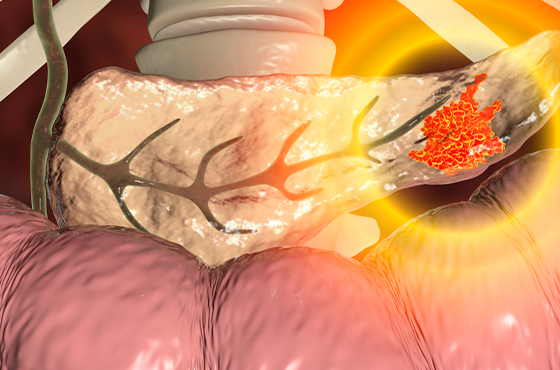Pancreas surgeries
There are currently two types of surgery used for pancreatic cancer: potentially curative surgery (when it is possible to remove the entire tumor) and palliative surgery (when the disease is widespread). This is to alleviate the symptoms of the disease or prevent certain complications, such as a blocked bile duct or intestinal obstruction.
To determine the best type of surgery to be performed, it is important that the professional knows the stage of the disease, which can be done through laparoscopy, to determine the extent of the tumor and whether it can be surgically resected.
To perform this technique, the surgeon makes some incisions in the abdomen, where he inserts the instruments needed for the procedure. A biopsy of the tumor and abnormal areas can show how far the disease has spread.

INFORMAÇÕES DO AUTOR:
Dr. Marcel Autran Machado Especialista em cirurgia do aparelho digestivo e cirurgia minimamente invasivaProfessor livre-docente de Cirurgia pela Universidade de São Paulo, graduado pela Faculdade de Medicina da USP (FMUSP) e com residência em Cirurgia Geral e do Aparelho Digestivo pela mesma instituição.
CRM-SP nº 70330
Potentially Curative Surgery

Some studies have shown that removing just a part of the tumor does not increase survival, so potentially curative surgery is only performed if the entire tumor can be removed. The main types are:
- Pancreatoduodenectomy (Whipple surgery): the most common surgery to remove cancer from the head of the pancreas. In this procedure the head of the pancreas and sometimes the body is removed. The small intestine, part of the bile duct, lymph nodes near the pancreas and even part of the stomach are also removed. The remainder of the bile duct is connected to the small intestine so that bile and digestive enzymes can continue to reach the organ.
- Distal pancreatectomy: surgery that removes only the tail of the pancreas or the tail and a portion of the body of the pancreas. The spleen is also usually removed. This technique is rarely used to treat pancreatic cancer, because often many of these tumors are already widespread when diagnosed.
- Total pancreatectomy: a procedure that removes the entire pancreas, as well as the gallbladder, part of the stomach and small intestine, and the spleen. It may be an option when the tumor has spread through the pancreas, but it can still be removed.
- Duodenopancreatectomia (Cirurgia de Whipple): cirurgia mais comum para remover o câncer da cabeça do pâncreas. Nesse procedimento é retirada a cabeça do pâncreas e, às vezes o corpo. Também são removidos intestino delgado, parte do canal biliar, linfonodos próximos ao pâncreas e até parte do estômago. O restante do ducto biliar é ligado ao intestino delgado, para que as enzimas biliares e digestivas possam continuar chegando ao órgão.
- Pancreatectomia distal: cirurgia que remove apenas a cauda do pâncreas ou a cauda e uma porção do corpo do pâncreas. O baço também é normalmente removido. Esta técnica raramente é utilizada para tratar o câncer de pâncreas, porque geralmente muitos desses tumores já estão disseminados quando diagnosticados.
- Pancreatectomia total: procedimento que retira todo o pâncreas, assim como a vesícula biliar, parte do estômago e do intestino delgado e o baço. Pode ser uma opção quando o tumor se disseminou pelo pâncreas, mas ainda pode ser removido.
Palliative surgery
When pancreatic cancer has spread, any type of surgery to be considered is designed to alleviate or prevent the symptoms.
That’s because tumors that grow in the head of the pancreas can block the bile duct, causing digestive problems and pain as the bile cannot reach the intestines. Bile chemicals also build up in the body causing jaundice, nausea, vomiting, and other problems.
There are two options for relieving bile duct obstruction:
- Stent placement: A stent is placed in the conduit to keep it open. This is usually done through an endoscope, with the patient sedated. Stents can also be placed before surgery to lower bilirubin levels and hence jaundice before the pancreas is removed.
- Bypass surgery: surgery to redirect the flow of bile from the common bile duct directly to the small intestine. Some of the advantages of this procedure are: longer lasting relief than the stent, which needs to be sanitized or replaced and is capable of reducing or eliminating any pain caused by the disease.

